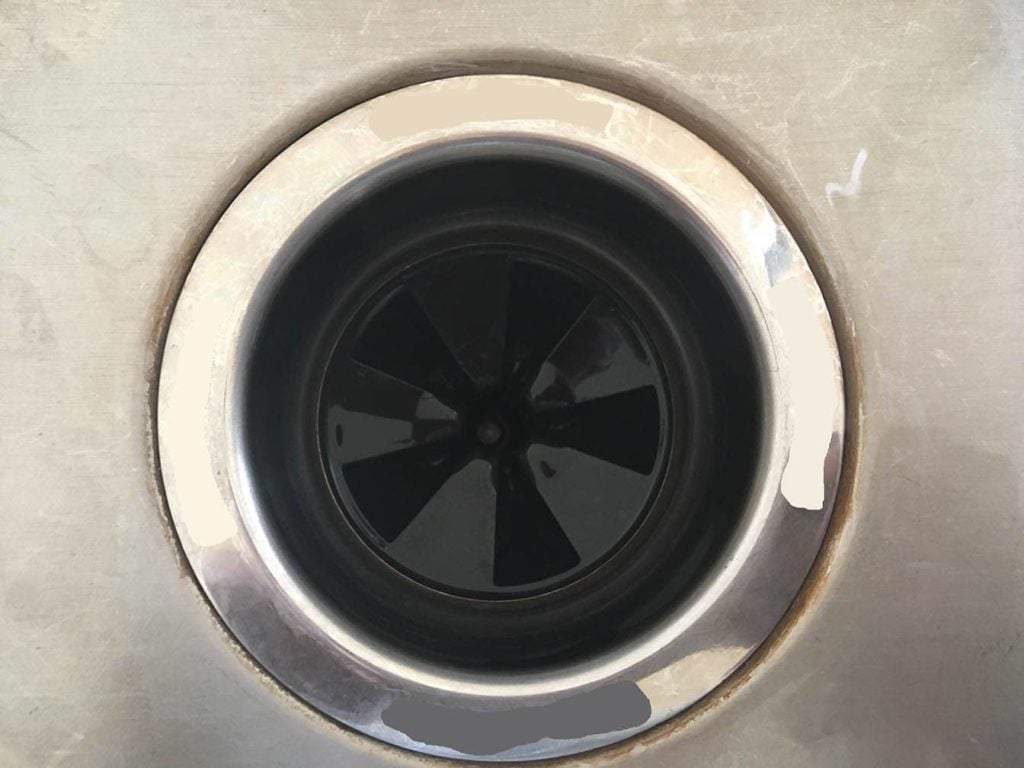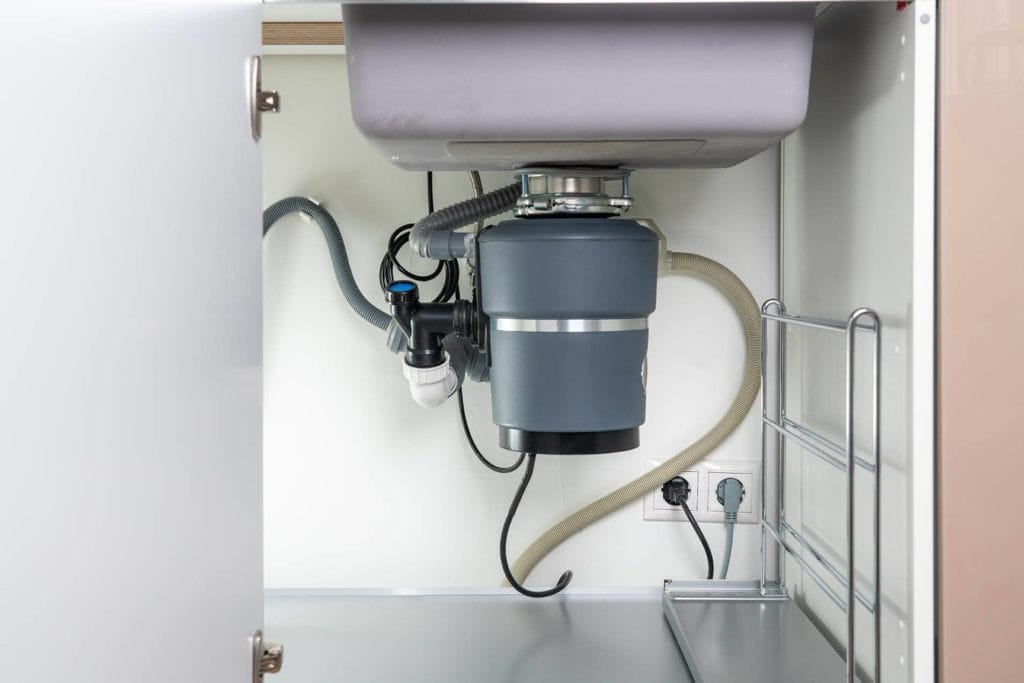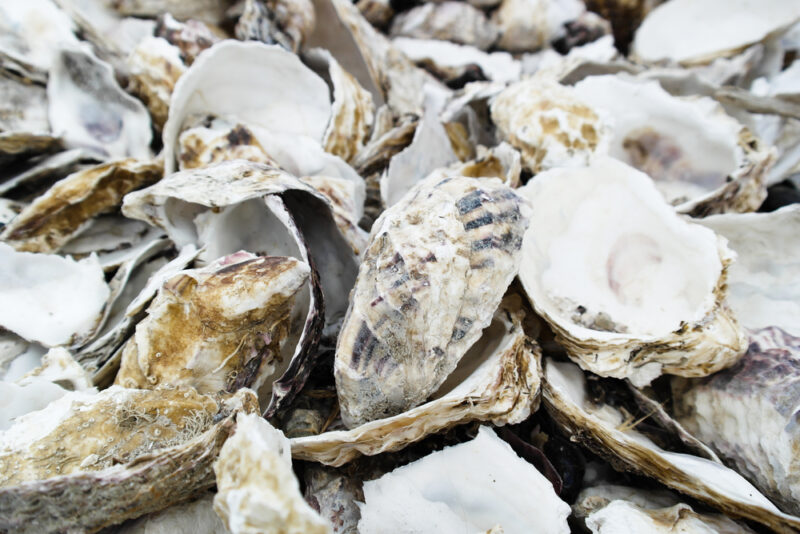Why Is My Garbage Disposal Leaking? 8 Possible Reasons!
-
Jeff Weishaupt
- Last updated:

A high-quality garbage disposal unit brings a lot of comfort and convenience to our life. However, it can start to leak in from different places, leading to water damage on your kitchen floor and cabinet.
Many factors can cause leakage in your garbage disposal. If you don’t get them treated quickly, it can even lead to a bigger plumbing problem in your kitchen. Leakage in garbage disposal typically occurs in three areas—top, middle, and bottom.
Knowing the common reasons for these leaks can help you diagnose and fix the problem immediately. If you know a thing or two about plumbing tools, you can easily fix your garbage disposal without opting for the expensive solution.
Here are 8 reasons you may see water leaking from your garbage disposal.
The 8 Possible Reasons Why Your Garbage Disposal Leaking
1. Damaged Gasket

The most common reason behind a garbage disposal leak is a damaged gasket. The gasket is the component present between the rubber seal and the flange. You should inspect this area to determine whether your appliance’s gasket kit is the reason behind the leak.
If you suspect any water discharge, you have a worn-out gasket problem. There is no need to worry since the gasket can get damaged over time. Also, if you don’t use your garbage disposal often, its gasket can dry up and become weak.
Moreover, a garbage disposal’s gasket can weaken if it isn’t properly sealed. Here is how you can fix the worn-out gasket:
- First, you need a new gasket to replace the existing one. You can easily find a new gasket at your local store.
- Once you get a new gasket, start detaching the drain from the garbage disposal. Pull out the plug and drain hose from the appliance if your disposal is connected to the dishwasher.
- Now, hold both sides of the mounting nut tightly and rotate them clockwise. Once the disposer unlocks, the unit will fall to the floor. Just fix the detached item so that it reveals the rubber gasket.
- Next, replace the worn-out gasket with a new one. Be sure to place the new gasket in the exact area where the old one was. Allow the gasket to pop on the lip. Finally, make sure that the gasket sits comfortably flat in its place.
- Fix the garbage disposal into its original place on the sink. Before installing it, make sure that the gasket is sealed properly.
- Lastly, tighten the garbage disposal on each mountain groove, fix the drains, and test the garbage disposal for any leakages.
2. Worn Out Sink Flange
The sink flange is located at the garbage disposal top or highest point where it touches the sink and drains. The flange prevents dirt and debris from blocking the kitchen drain. If you see water leaking from this area, you have a problem with the sink’s flange.
A defective flange is usually caused by loose mountain nuts or weak putty. If the issue is the damaged putty, you should replace it as soon as possible.
First, unscrew the bolt and place the putty between the flange and the pipe. Tighten the pins and check whether the garbage disposal is still leaking from the top.
- Start by detaching the screws of the garbage disposal that connect the main drainpipe to the appliance. Then, remove the screws from the metal clamp that attaches the dishwasher hose to the garbage disposal.
- Now, detach the mounting ring that attaches the garbage disposal to the sink’s mounting components from underneath. Finally, remove the garbage disposal and put it in a clean area.
- Take a wrench and remove the bolts from the mounting assembly. Detach this component and put it next to the garbage disposal.
- Now, focus on the sink’s top and raise the flange. Then, take out the putty and clean it with a damp cloth.
- Gather a significant area of putty and mold it in rolling movements into a rope that perfectly fits the flange. Now, wind it around the top area of the flange and take the flange to the garbage disposal’s drain and fix it there.
- Lastly, put the mounting ring and mounting assembly back and tighten the screws. Also, reinstall the dishwasher hose, drain pipe, and garbage disposal unit.
3. Weak Drain Lines

Since garbage disposal is connected to the drain lines, any leakage in these lines can lead to water leakage from the appliance. When inspecting the area where the garbage disposal meets the drainage system, you will notice two lines. The thicker one is the sewer disposal line, while the thinner one is the dishwasher disposal line.
If you see any of these lines leaking, take a screwdriver and tighten the clamp that holds the dishwasher and the garbage disposal together. You can also tighten the dishwasher disposal line screws and replace the gasket with a new one if you haven’t changed it for a while.
When checking the drain lines, watch out for any defects. It is natural for the drain lines to develop cracks and leakages over time. If you suspect water leaking from any of these lines, change them or simply contact a professional plumber to perform the task.
4. Loose Seals or Pipes
To determine if the problem is in your pipe’s sealing, you need to inspect beneath your sink. This is the place where you usually store different items. Unfortunately, storing items in these areas can damage the disposal pipe.
If your garbage disposal experiences an immense force, it can displace from its original position. Not only that, but you may also have loose pipes and screws and freely-moving holding bolts.
In such a situation, you need to tighten the nuts and bolts in the leaky areas. If the water leakage continues, take a new putty sealing ring roll and place it in the disposal.
5. Poor Connection of the Dishwasher to the Drainpipe

Another reason for the garbage disposal leakage is the poor connection of the dishwasher to the drainpipe. Since the dishwasher disposes of food waste into the garbage disposal, both appliances are connected. However, leaks may occur in the connection between both units because of loose hoses or cracks.
The easy solution for the poor dishwasher connection is replacing the damaged hose. This way, the garbage disposal won’t leak into your dishwasher.
6. Cracked Garbage Disposal Body
If you have already changed your garbage disposal’s gasket and still notice water leakage, try inspecting the surface of the garbage disposal for cracks. In case you find any, visit your nearest store to get a new garbage disposal appliance.
Sometimes, your garbage disposal’s body can crack from certain areas due to bumps and knocks when retrieving items from the sink’s underneath area. If you have kept your household items there, changing the appliance’s position is better to avoid further damage.
7. Leaking Reset Buttons

If you suspect water leaking from the garbage disposal reset buttons, repairing the appliance can fix the problem. However, it will only be a temporary solution. You should visit your local store and buy a new garbage disposal for a permanent fix.
If you have just bought a garbage disposal with a faulty reset button, you can get it fixed for free, as these appliances come with a warranty. But if the disposal has already exceeded its warranty, you might need to seek a professional’s advice.
8. Defective Discharge Pipe
Last, a garbage disposal may leak from the bottom due to a defective discharge pipe fixed to the sink. They are prone to natural wear and tear. Also, this pipe can become a victim of loose plumbing.
You can fix the defective discharge pipe by screwing the sink flange with a wrench. If the water still leaks from the garbage disposal, you’d have to replace the seal present between the discharge pipe and the holding nut. Doing so will hopefully fix the leakage.
How To Protect Garbage Disposal from Leaks
While fixing garbage disposal leaks is possible, you must try to avoid this situation in the first place. No one wants a garbage disposal that deteriorates after a few uses. So here are some tips to help you protect your garbage disposal from leaks in the long run:
Don’t Dispose of Hard Waste
The garbage disposal grinder is a sturdy component. However, if you dump hard waste into it, it might get damaged or become entirely unfunctional. To determine whether your garbage disposal is capable of grinding hard items, you should check the manual that comes with the appliances package. It can grind hard waste to some extent if it is a high-end unit.
By hard waste, we mean stubborn corn kernels, bones, shellfish parts, etc. The best place to dump these materials is the trash can. In fact, you can also use these items as compost for your gardening plants.

Avoid Starchy Waste
Another food waste to avoid is fibers and starchy items, as they can clog your drain. Fibrous food typically keeps twisting in your mouth as its starch keeps hardening. These items include banana peels, onion skins, celery, fruit seeds, and corn cobs.
To dispose of such food waste, you should cut them and smaller pieces and then put them in the garbage disposal. You can also use a trash can and throw these items in them. Remember not to grind eggshells in the garbage disposal, as they can also clog your plumbing.
Cut Large Items into Tiny Pieces
Bigger or larger waste, such as melon skins and corn cobs, should be cut into tiny pieces and put in the garbage disposal. Similarly, you should dispose of a little trash at a time to ensure safe grinding.
However, it could be a hassle to cut a significant amount of large waste into small pieces. If that’s too time-consuming for you, don’t dispose of them in the garbage disposal. Instead, use them as a compost heap or throw them in the dustbin.
Use Cold Water After Using the Appliance
After using the garbage disposal, you should run the cold water from the grinder and faucet after the waste leaves the drain. Doing so for 30 to 60 seconds can help you remove the waste smoothly, as the cold water prevents the appliance from heating up.
Comparatively, hot water can melt the grease or fatty substances, which usually clog the piping. So, avoid hot water and always flush the garbage disposal with cold water.

Keep the Garbage Disposal Maintained
Regular maintenance of the garbage disposal will ensure the appliance’s performance in the long run. First, you should keep your garbage disposal clean, including its internal components.
Simply turn the grinder and wipe the inside of the rubber present in the sink’s middle. A clean and dry paper towel will give you effective results. If you do not clean this area, it can start smelling unpleasant.
You should also inspect the shredder’s blade. If there is any food residue there, you can toss a few ice cubes to let the shredder’s blade grind the waste properly. You can also use lemon juice or vinegar to clean the appliance properly.
 Conclusion
Conclusion
A garbage disposal unit has become an important part of every household. However, just like every other appliance, the garbage disposal is also vulnerable to gradual wear and tear, no matter how expensive it is. However, high-end models can go many years without showing any signs of damage.
Many factors can cause leakage in your garbage disposal, such as a defective gasket, worn-out drainpipes, poor-quality sink flange, loose pipe seals, etc. Hopefully, you now know how to fix all these issues effectively and keep your garbage disposal running for a long time.
Featured Image Credit: mariakray, Shutterstock
Contents

